Top 14 Most Evil Doctors of the Last Two Centuries
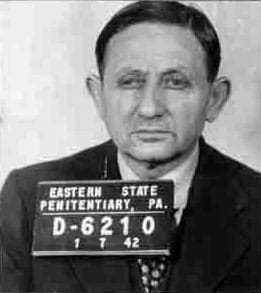
When we think of evil doctors or monsters, we are likely to think of Frankenstein or Dr. Jeckell/Mr. Hyde. Although fictional horror can be scary, real-life depravity can be much more terrifying. While there are many stories of real-life horror, following are my choices for the top 14 most evil doctors. Feel free to share your picks. Read on… if you dare!
- The Mob Doctor
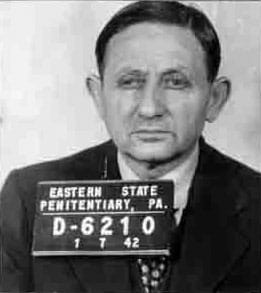
Morris Bolber: Dr. Bolber was part of the infamous “Philadelphia Poison Ring,” led by Italian immigrant cousins, Herman and Paul Petrillo in the 1930s. The cousins had contacts in the criminal world. Harold was an expert counterfeiter and arsonist, while Paul ran an insurance scam business from the back of his tailor’s shop. Dr. Bolber was a Russian-Jewish immigrant who subscribed to “la fattura,” a magic believed by many South Philadelphia Italians of the time. When the Petrillos aspired to “la fattura,” they recruited the help of the doctor, who frequently gave potions to patients to better their lives. The cousins started issuing insurance policies without medical exams and then would pay the doctor to poison them with his potions (arsenic). The insurance policies were made out to the gang rather than the wives who had been widowed. They also hired killer thugs who murdered others through various means, such as drowning, bludgeoning, and running over the victims by car. The murders began in 1931, and an estimated 30-50 people were killed. Dr. Bolber was arrested in 1939 and turned state’s evidence on the cousins, who were sentenced to death.
- The Euthanasia Doctor
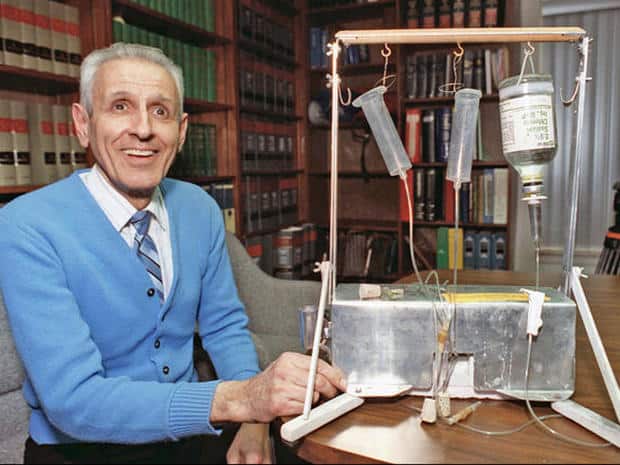
: Dr. Kervorkian is a well-known US pathologist and advocate of euthanasia. While many may debate his addition to this list, the fact is that he is responsible for the deaths of more than 100 patients at a time when no laws existed. He ended up being sentenced to 8 years in prison for his actions. Early in his career, he fell under criticism when he proposed medical experiments on death row inmates while they were still alive. He presented a paper to the American Association for the Advancement of Science in 1958, arguing that condemned criminals could provide a service to humanity before their death. These experiments would be performed while the inmates were conscious and end in their fatality. For his views, his peers nicknamed him “Dr. Death.” He followed this research with the invention of what he called a “suicide machine.” He made it with materials that cost $45 and included three bottles of successive doses of saline, followed by a pain killer, and finally a fatal dose of potassium chloride. In 1990, he became infamous after using his device on Janet Adkins, who sought him out after she learned she had Alzheimer’s disease but before it took full effect. He carried out the assisted suicide in a public park inside his Volkswagen. Charges against him were dropped, but his medical license was suspended. However, this did not stop the doctor on his wave of assisted suicide. Legal action was taken to stop him, but he slipped through on loopholes in the law until he was convicted in 1999. After serving 8 years of a 25-year sentence, he was released on good behavior. He died in 2011 at the age of 83.
- The Abortionist Killers
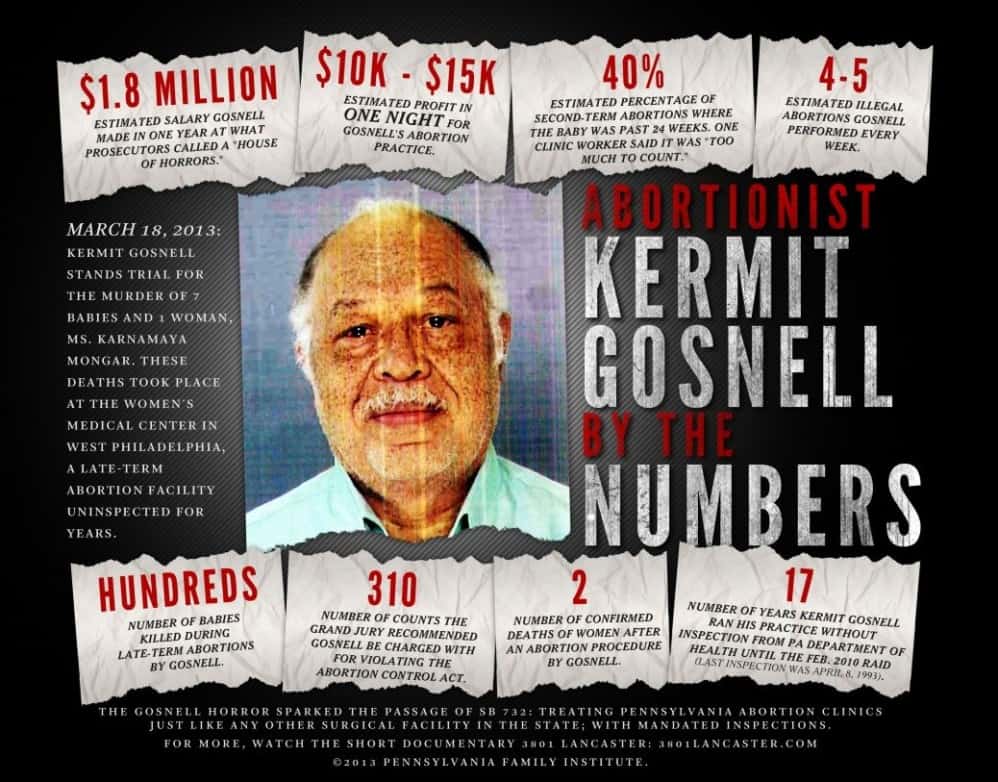
Dr. Gosnell was a physician in Philadelphia who was well-known for providing abortions to immigrants and minorities. In the 1970s, he became an early advocate of abortion rights. In 1972, he opened an abortion clinic, The Women’s Medical Society. His practice became known as an abortion mill, where viable fetuses were routinely killed following illegal, late-term procedures. A total of 46 known lawsuits were filed against him during his career. In 2010, his clinic was raided after a long investigation by the DEA, the Philadelphia PD, and the state’s dangerous drug enforcement unit over his illegal drug-prescribing habits. The investigation and raid also revealed the suspicious death of a patient in 2009, as well as unsanitary conditions, untrained staff, and the use of powerful drugs without appropriate supervision. They found half-conscious women waiting for abortions, moaning in bed on blood-covered recliners, fetal parts in milk and orange juice containers, medications past their expiration dates, staff who could not tell the investigators what dose of medications they had just administered, and even flea-infested cats. Additionally, Gosnell admitted that at least 10% to 20% of the abortions were performed after 24 weeks (the legal limit). Of the remains recovered, three were discovered to have been viable. In 2010, Gosnell’s medical license was suspended, and he was arrested in 2011. He was charged with many counts, including third-degree murder of an adult patient, multiple first-degree murders of babies, and criminal enterprise for illegally prescribing and dispensing controlled substances. It was estimated that he made an additional $10,000-$15,000 per night for illegal prescribing. He was sentenced to three life sentences without the possibility of parole. A medical student who aided Gosnell, Steven Massof, was sentenced to 6-12 years in prison. Massof testified that he saw more than 100 babies born alive who had their necks snipped, which he equated to a beheading.
- The Starvation Doctor
Linda Burfield Hazzard: Dr. Hazzard was not a medical doctor but received a license to practice medicine through a loophole that grandfathered practitioners of alternative medicine under the regulations of the state of Washington. She was a well-known advocate of fasting and wrote two books on the subject: “Fasting for the Cure of Disease” and “Scientific Fasting: The Ancient and Modern Key to Health.” She believed all illnesses were the result of excessive eating. She created her own sanitarium, where inpatients fasted for days, weeks, and months on small amounts of tomato and asparagus juice and an occasional teaspoon of orange juice. The patients were also given daily enemas, as well as massages that the nurses said sounded more like beatings. Under her care, 40 patients died. She claimed they died of previously undiagnosed conditions, while others stated the cause was starvation. In fact, locals called her place “Starvation Heights.” In 1912, she was convicted of manslaughter for the death of a wealthy British woman who weighed less than 50 pounds at the time of her death. It was discovered that Hazzard forged the woman’s will to make herself the beneficiary, as well as stole all the patient’s valuables. Along with her husband, she gained power of attorney over her patients, sometimes by declaring them mentally incompetent, and took over their estates. She was sentenced to hard labor at the penitentiary of Walla Walla but was pardoned 2 years later for unknown reasons. She moved to New Zealand with her husband and practiced as a “dietician and osteopath.” Her license there was soon revoked for practicing without appropriate credentials. She died in 1935. In an irony, the son of one of her victims went on to establish a successful seafood restaurant in Seattle.
- The Lambeth Poisoner
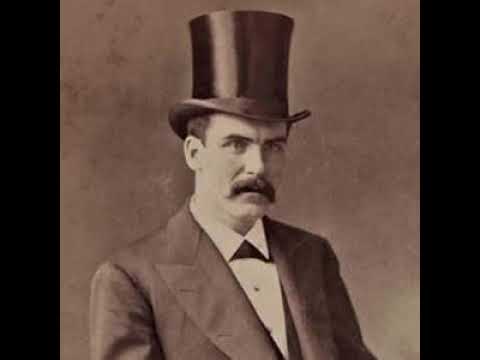
Cream first started practicing medicine in Chicago, frequently performing illegal abortions for prostitutes. In 1881, several patients died, including Daniel Slott, who was found to have died of strychnine poisoning after a supposed remedy for his epilepsy. Slott’s wife was the mistress of Cream, who subsequently turned state evidence on the doctor, confessing she supplied Cream with the poison to kill her husband. Cream was sentenced to life in Joliet Prison but was released in 1891 after his brother bribed authorities. Cream moved to London and resided on Lambeth Palace Road. Several prostitutes soon died of strychnine poisoning after Cream gave them a drink. Cream wrote a letter to one doctor accusing him of poisoning one of the victims and demanded money from him. In another case, he wrote a letter to the coroner, offering to name the murderer. PD at Scotland Yard soon became suspicious of him and put him under surveillance. He was arrested, convicted, and sentenced to death. At his execution, his last words were, “I am Jack the…” Speculation arose that he was Jack the Ripper, although he had been in prison at the time of those murders.
- The Kill-for-Inheritance Doctor
John Bodkin Adams: Dr. Adams was a general practitioner in the British community of Essex. He was considered compassionate, especially to his elderly patients. However, it was also noted that he liked to use dangerous drugs and expressed an abnormal interest in his patients’ wills. In 1956, police began investigating Adams under suspicion that he was murdering elderly patients to acquire some of their inheritance. Although they found dozens of suspicious cases, they charged him for only two. The patients had willed large sums of money to Adams, and the causes of their deaths were not clear. Ultimately, Adams was not convicted of those deaths but found guilty of forging prescriptions and falsifying medical forms. He was eventually able to reopen his practice, but many of his elderly patients left him. His case had a significant impact on criminal trials in England.
- America’s First Serial Killer
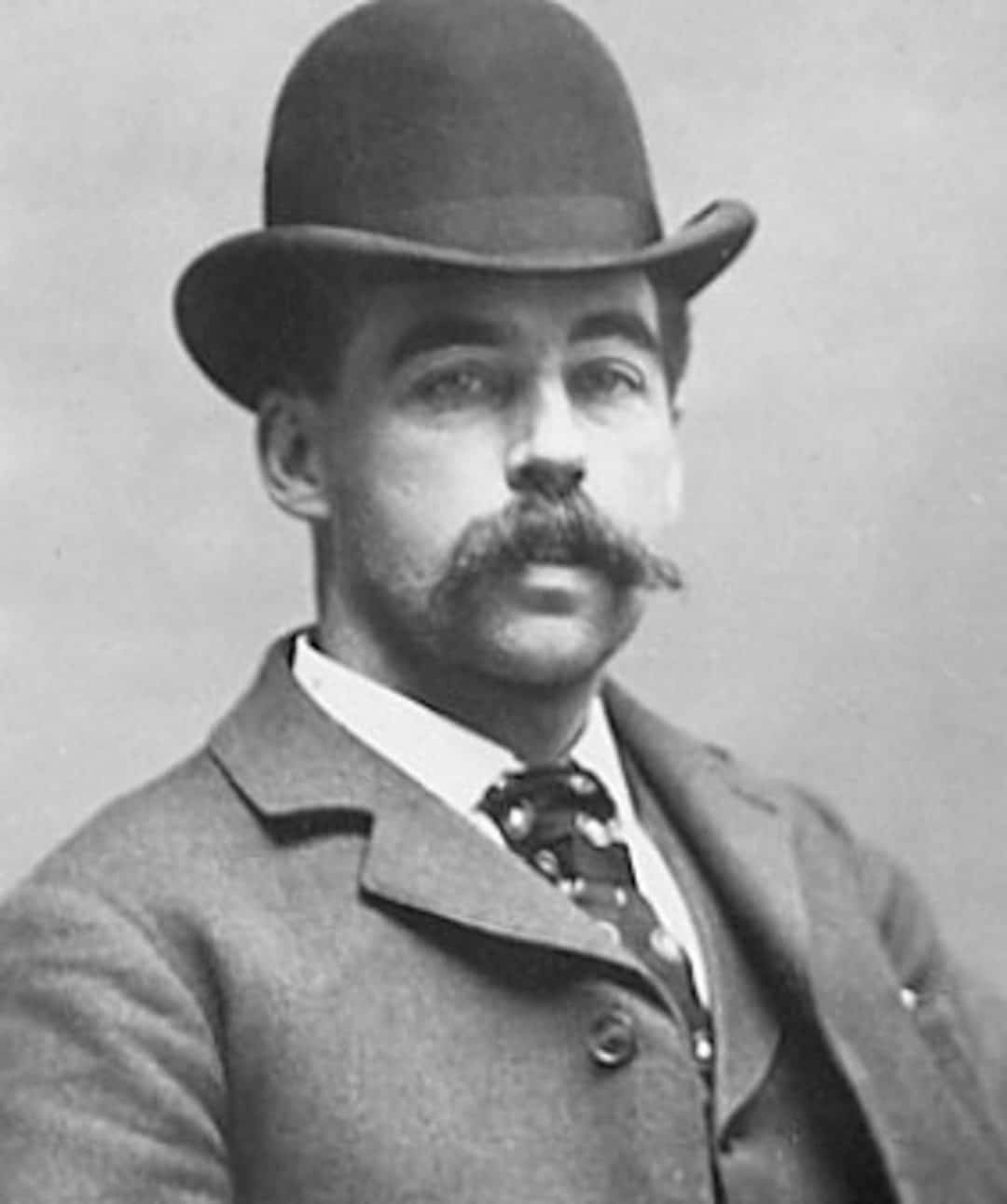
Holmes was America’s first known serial killer. His fascination with medicine was evident from childhood, when he would perform “surgeries” on animals. It was also speculated that he killed his childhood playmate. After finishing medical school, he took a job as a pharmacist in Chicago. He soon started killing people to steal their property. He built himself a house that became known as “Murder Castle.” It was equipped with secret passages, trapdoors, soundproof rooms, doors that locked from outside, gas jets to asphyxiate victims, and a kiln to cremate bodies. During the World’s Columbian Exposition of 1893, Holmes became friendly to many different women, gained control of their finances, and murdered them. Additionally, he required all of his employees to take out life insurance policies naming him as a beneficiary. Many of the bodies were sold to medical schools. In 1893, he was arrested for insurance fraud for a fire in his home. Eventually, he was convicted of murder and sentenced to death. The exact number of his victims is unknown, but some estimate it is over 200.
- “Doctor Satan”
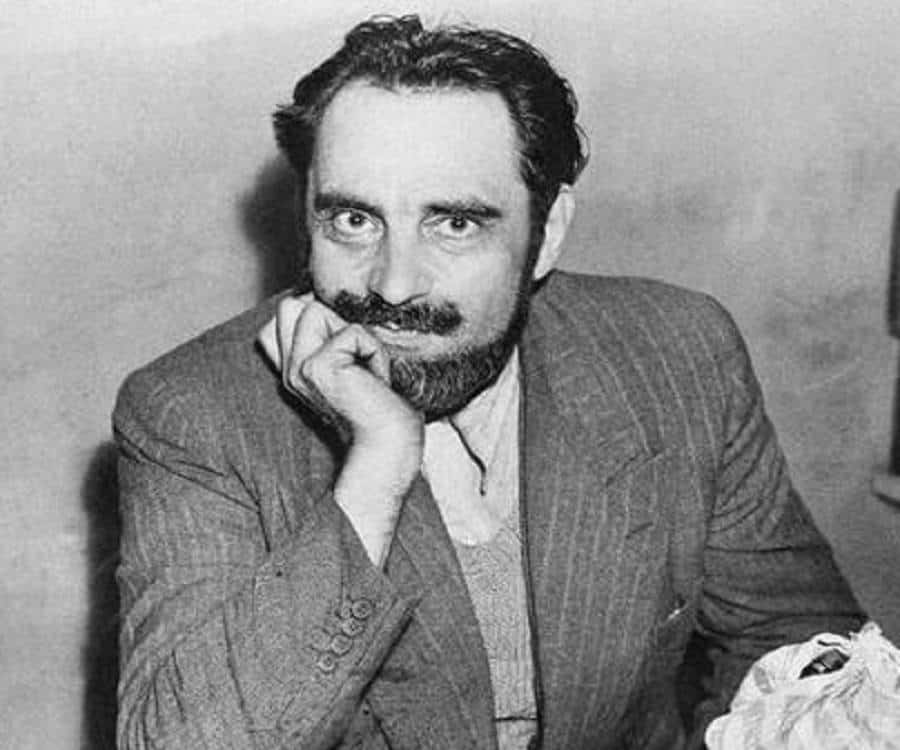
As a child, Petiot was seen to be highly intelligent although exhibiting some abnormal behavior. In fact, he was expelled several times from school. At the age of 17, he was arrested for mail fraud but found mentally unfit to stand trial. He joined the army and was caught stealing blankets but found not guilty by reason of insanity. The army discharged him because of mental unfitness. Eventually, he was able to earn a medical degree in 1921 and started his practice in Villaneuve, France. He became the mayor in 1926 but was suspended more than once. Two of his patients were murdered, but he never was charged. He lost his seat after he was found stealing power from the city. In 1933, he moved to Paris, where he soon developed a good reputation as a doctor, while he continued his crimes. When WWII struck, he came up with a plan to enrich himself. He offered help to Jews wishing to escape Nazi-occupied France. He injected them with poison, telling them it was medicine to protect them against disease. After he watched them die, he stole their money and valuables and placed their bodies in a furnace in the basement of his specially soundproofed house. In 1943, he was arrested by the Gestapo but released after several months. After the liberation of Paris in 1944, he was arrested, and 30 corpses were found in his basement. He admitted to killing 60 people and was convicted for 26 murders. He was guillotined in 1946.
- “Doctor Death”
Jayant Patel: Patel is a surgeon born and trained in India. In 1984, he started practicing in Buffalo, NY, where he was soon fined and placed on 3 years probation for not examining his patients prior to surgery. His NY license was eventually revoked in 2001. He moved to Oregon in 1989 and soon fell under scrutiny. Eight cases led to malpractice or wrongful deaths. Claims of his coworkers stated that he operated on patients who were not on his roster (ie, other doctors’ patients), that he operated unnecessarily, and caused serious injury and death. In 1998, Kaiser Permanente restricted his practice, prohibiting him from operating on the liver or pancreas and requiring a second opinion for other surgeries. The Oregon Board of Medicine made the restriction state-wide in 2000 after reviewing four cases resulting in three patient deaths. Patel became the director of surgery in 2003 at the Bundaberg Base Hospital in Australia. He had been hired by Queensland Health under the “area of need” program, not disclosing his actual credentials. His inadequacies were soon noticed, and nurses were said to hide their patients from him when he was in the hospital. In 2005, news of the injuries and deaths connected to him hit the media, and soon the outlets were flooded with other stories. He returned to Portland in 2006. A few months later, a magistrate issued a warrant for his arrest and extradition. Charges included manslaughter, causing grievous harm, and fraud. Patel was extradited in 2008 and convicted. However, his conviction was overturned on appeal. Upon pursuing outstanding charges in 2013, Patel pleaded guilty to four charges of fraud and was ultimately sentenced to 2 years in prison, but that was wholly suspended because of the time he already served in jail for the convictions that were overturned by the High Court of Australia.
- The House Call Serial Killer
Harold Shipman: As a child, Shipman became interested in medicine watching his mother suffer and die from lung cancer. After earning his medical degree, he began practice as a GP in Lancashire, England. However, in 1975, he was forced into drug rehab after becoming addicted to the opiate pethidine and having writen many fraudulent prescriptions for it. In 1977, he moved to Hyde, where he started a thriving general practice. A local undertaker soon noticed that Shipman’s patients were dying in unusually high numbers and often found in similar positions: sitting up or reclining on a settee. Another colleague noticed the same and the coroner was notified and referred it to the PD. At first, Shipman was cleared of suspicion until an 81-year-old died under suspicious circumstances. Her family noticed that her will had been changed to make Shipman the primary beneficiary and suspected it was forged. They were also concerned that the death occurred shortly after a home visit from the doctor, despite her being fine before he came. They requested the body be exhumed, and her cause of death was found to be a morphine overdose within 3 hours of her death, overlapping the time Shipman had been at her home. An investigation ensued, and it was discovered that Shipman encouraged families to cremate, and if they raised questions, he would show them computerized medical notes that corroborated his cause of death listed on the death certificate. The police discovered that the altered note happened directly after killing the patient, as each alteration had been time stamped. While Shipman claimed to have called emergency medical services in front of the families and then calling back to cancel the request after the patient died, telephone records showed that no calls were made. He also exhibited drug-hoarding behaviors, falsely prescribing morphine to patients who didn’t need it, overprescribing it to those who did, and visiting homes of the recently deceased to collect unused medications for “disposal.” Shipman was eventually found guilty of 15 counts of murder and one charge of forgery. An audit after his conviction put the number of victims he murdered around 236. He committed suicide by hanging in his jail cell shortly after his conviction.
- The Father of Lobotomy
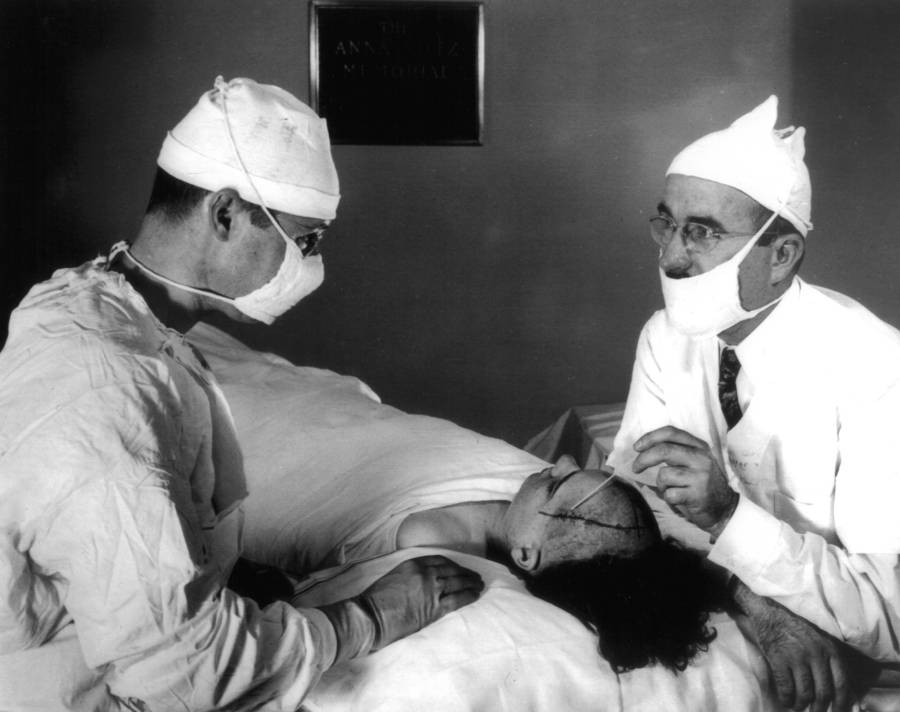
Freeman was an American physician and advocate of psychosurgey. Because he had no surgical training, he initially worked with other surgeons. Along with Dr. James W. Watts, he became the first in the US to perform prefrontal lobotomy by craniotomy in the operating room. Looking for a quicker and easier way to perform the procedure, he perfected the transorbital lobotomy. In this procedure, the patient was first rendered unconscious by electroshock. Initially, Freeman used an actual ice pick from his own kitchen. He then went on to create and use the leucotome, until it could not withstand the stress and broke off in a patient’s skull. He then designed and implemented the stronger orbitoclast. These instruments were inserted into the back of the eye orbits and then hammered into the skull. They were wiggled back and forth in order to sever connections to the prefrontal cortex in the frontal lobes of the brain. This procedure often left patients in a vegetative state or reduced their behavior to child-like. It is estimated that 490 people died as a result. Freeman took his newly modified procedure on a national campaign in is van, which he dubbed his “lobotomobile.” He would demonstrate the surgery to doctors working at state-run institutions. Sometimes, he would show off by ice-picking both eye sockets at once, with an ice pick in each hand. His most notorious surgery was performed on Rosemary Kennedy, who was left in a vegetative state at age 23. One of his former patients, Howard Dully, went on to write the book “My Lobotomy,” discussing his experience with the procedure at age 12. Freeman allowed the media to watch a procedure in which a patient died when the ice pick slipped into the brain. He was noted to act indifferently and move on to the next patient. His license was eventually revoked after the death of a patient. Freeman died of cancer in 1972.
“The ice pick lobotomy was performed by Freeman with a recklessness bordering on lunancy, touring the country like a traveling evangelist. In most cases, this procedure was nothing more than a gross and unwanted mutilation carried out by a self-righteous zealot.”
–Ole Erersen
- The Sterilization Nazi
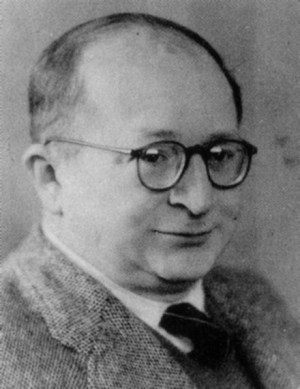
Clauberg was a gynecologist by training who first conducted research to find treatments to help infertile women conceive. He joined the Nazi party in 1938 and later approached Heinrich Himmel to be allowed to conduct experiments to find a sterilization procedure that could be performed quickly on a large number of people. He performed experiments in the Auschwitz concentration camp, injecting toxins into women’s (mostly Jewish) uteruses. This was done without any anesthesia, resulting in severe pain and often death. Sometimes, patients would be deliberately killed in order for autopsies to be performed. After the Soviets moved in, Clauber went on to conduct his experiments in the Ravensbruck concentration camp. He was arrested by the Soviets and sentenced to 25 years in prison. As part of the German-Soviet repatriation agreement, Clauberg was released and then arrested by the Germans. He died in 1957 before standing trial.
- The Poison Doctor
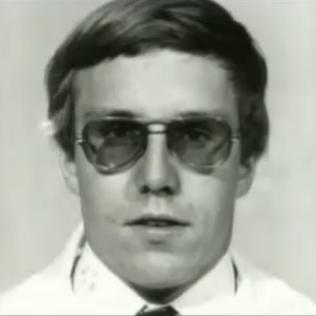
From a young age, Swango showed an unusual interest in violent deaths, as well as the Holocaust. In fact, he kept scrap books of gruesome pictures of fatal car wrecks and crimes. During his senior year in college, Swango wrote his chemistry thesis on the poisoning death of Bulgarian writer Georgi Markov, and since that time, became obsessed with poisons, especially those that could be used as silent killers. During Swango’s third year of medical school, at least five patients died shortly after being seen by him. Classmates called him “Double-O,” referring to James Bond and the “license to kill” slogan. At the same time, Swango took a job as an ambulance driver but was soon not allowed direct contact with patients for an unknown reason. He secured a neurosurgery residency but was failed in his last 8 weeks of medical school when he failed to show up. Upon Swango hiring a lawyer, the school feared litigation, allowed him to postpone his graduation for 1 year, but gave him a strict set of rules to follow. Swango buckled down and graduated with residency positions secured in surgery and then neurosurgery to follow. Shortly after graduation, he was fired from the ambulance company after he told a man in the midst of a heart attack to walk to his car and have his wife drive him. Shortly after starting his internship, a series of unexplained deaths among healthy patients occurred on the wing to which he was assigned. One who survived reported to the nurses that Swango injected him with medication just minutes before she started having seizures. An investigation was started, but he was exonerated as the hospital aimed to minimize any fall-out. Swango was moved to a new wing, where a series of unexplained deaths soon followed. Additionally, fellow residents fell violently ill after he brought in fried chicken for everyone. Swango was not invited back for his second year. Instead, he attained a license to practice medicine in Ohio in 1984 and took a job with an ambulance company that did not check his background. He exhibited odd behavior, including frequently showing of his macabre scrapbooks, inappropriate and strange comments about death and dying, and being unusually excited by CNN news regarding mass killings and horrific accidents. Again, Swango brought food to his co-workers (this time, doughnuts), who became violently ill, requiring several to seek medical care at the hospital. People became suspicious when a series of similar episodes followed and decided to get tested; several tested positive for poison. Swango was arrested, sentenced to 5 years, and had his license revoked. He was released after 2 years, moved to Virginia, and took a job as a career counselor. Soon, co-workers suddenly began suffering severe nausea and headaches. Swango was fired in 1989 and then took a job as a lab tech, but quit after a wave of illnesses among his co-workers occurred, leaving an executive in a near comatose state. In 1990, he legally changed his name and forged documents about his conviction. Eventually, he landed a residency position in internal medicine in South Dakota in 1992. Things were going well until he decided to join the AMA. Someone was a friend of the dean at the University of South Dakota and informed him of the truth of Swango’s background. At the same time, the Justice Files aired a 20/20 interview he had done while in prison. He was asked to resign. His girlfriend was shocked and soon began to suffer violent headaches until she separated from Swango. He then lied his way into a psychiatry program at the University of NY at Stony Brook. On his internal medicine rotations, patients again began to mysteriously die. Swango’s girlfriend kept in communication with him until she discovered that he had emptied her checking account; she committed suicide by shooting herself in the chest the next day. Her mother took revenge on Swango by sending a letter to his dean, getting him fired. The dean then sent a letter to every medical school and over a thousand teaching hospitals in the US, warning them of Swango’s past and his deception. After being fired, Swango went underground with the FBI searching for him. He resurfaced in 1994 as Jack Kirk, working at a company in Atlanta that allowed him access to all the city’s water supply. The FBI contacted them, he was fired, and then vanished again. He soon showed up in Africa, taking a job in Zimbabwe as a doctor. It was soon apparent that he was untrained to perform some basic procedures. Patients again began mysteriously dying. Police turned up hundreds of various drugs and poisons in his home. Swango eventually fled, when it was apparent that evidence was mounting against him. In 1997, he entered the US enroute to Saudi Arabia, where he was arrested by immigration officials and sent to NY to remain in prison until his trial. He pled guilty to fraud. Just before he was released, he was charged with murder and fraud. Knowing that Zimbabwe was fighting to have him extradited and he would face the death penalty there, he pled guilty. He is currently serving three consecutive life sentences at ADX Supermax Federal Prison.
- The “Angel of Death”
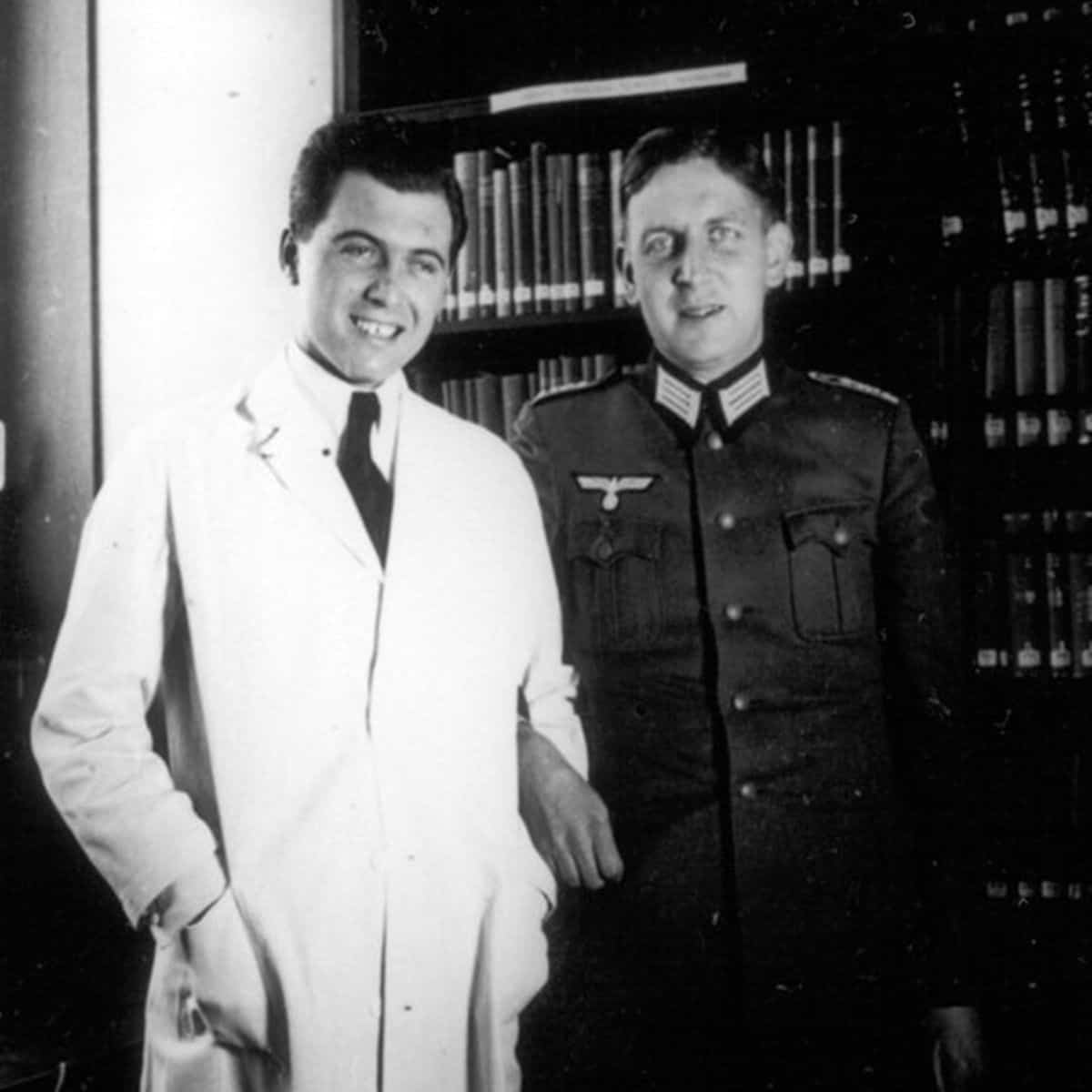
Mengele received his medical degree in 1938, the same year he joined the German Schutzstaffel (SS) paramilitary organization under Hitler and the Nazi party. He volunteered for medical service with the armed SS, but all his activities are not clear from this period of time. In 1943, he returned to Germany after being wounded as a medical officer with the SS Pioneer Battalion V. He began work at the Kaiser Wilhelm Institute for Anthropology, Human Genetics, and Eugenics. He received a promotion to SS Captain and was then transferred to Auschwitz, where he became Chief Camp Physician of Auschwitz II, under the jurisdiction of Dr. Eduard Wirth. Among his roles, he would perform rounds in which he would make selections of which prisoners on the ramp arriving from the many trains would be sent to work and which would immediately be sent to the gas chambers. He became known as the “Angel of Death” or the “White Angel” for his particularly cruel and cold demeanor. Often, he would be seen at the camp while off-duty, searching for twins to be subjects in his “experiments.” He also made weekly visits to the barracks hospitals and ordered the deaths of those who were not recovered after 2 weeks. Another of his duties was supervising the administration of Zyklon B, the cyanide-based pesticide used in the mass killings in the gas chambers.
Mengele’s “research” included:
- Due to his fascination with heterochromia iridium (eyes of different colors), he would inject the eyes of living persons with chemicals to try to change the color. Also, he collected the eyes of victims who were murdered, some often just for this purpose and to send to his colleague, Karin Magnussen, who was conducting research on eye pigmentation.
- During his time at Auschwitz, there was an outbreak of Noma, a disease that causes gangrene to the mucous membranes of the mouth and other tissues. He documented the progression of the disease and also killed some just to preserve their heads and organs for further study.
- Mengele endorsed Nazi racial theory and conducted a wide-spectrum of experiments to show the lack of resistance among Jewish or the Roma to various diseases. He often intentionally infected one twin with typhus or some other disease; if one died, he would often kill the other to perform comparative post-mortem studies.
- He attempted to demonstrate the “degeneration” of the Jewish and Roma blood by documenting physical oddities and collecting/harvesting tissue samples and body parts. “Test subjects” often died as a result or were killed to facilitate autopsy.
- He sought out pregnant women for some experiments and sent them to the gas chambers when he was done with them.
- He sewed a set of Romani twins together to simulate conjoined twins. Both died of gangrene within a few days.
- One night, he killed 14 twins by injecting their hearts with chloroform.
- He performed unnecessary amputations of limbs, transfused the blood of one twin into the other, and much more.
In 1945, after the Soviets approached, Mengele fled Auschwitz. He was briefly in US custody in the immediate postwar period but was released because his captors were unaware his name was on the list of wanted war criminals. Using falsified papers, he worked as a farmhand in Bavaria from 1945-1949. Then, he settled in Argentina. His crimes were well-documented by postwar courts, West German authorities issued a warrant for his arrest in 1959, and request for extradition was made in 1960. Mengele moved to Paraguay and then to Brazil, where he died in 1979 under the fictitious name of Wolfgang Gerhard. His body was exhumed and his identity confirmed by DNA analysis.
“When he smiled, you knew it meant danger, because when he was smiling, he was at his most sadistic.” – Auschwitz survivor
Real-life monsters come in all walks of life. Don’t assume that someone with a job requiring trust is, in fact, trustworthy. Don’t expect evil to come at you in obvious form. It doesn’t: it hides under cover, and it is often disguised in a pleasant package. Keep your eyes open, and trust your gut—that tingle down your spine may just
 Pathways Drug Rehabilitation Luxury Addiction Treatment & Detox Center
Pathways Drug Rehabilitation Luxury Addiction Treatment & Detox Center


